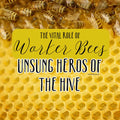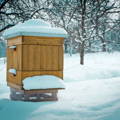
Winterizing Your Honeybee Hives: A Comprehensive Guide
As the days grow shorter and the temperatures drop, it's crucial to prepare your honeybee hives for the harsh winter months ahead. Proper winterization is essential to ensure your bee colony's survival and health.
Honeybees are remarkable creatures, and they have developed several strategies to endure the cold season. However, they still need some assistance from beekeepers. In this article, we'll explore the essential steps to prepare your honeybee hives for winter.
FUN FACT: Wild bees lives on every continent except Antarctica.
Subscribe
To join our mailing list and never miss an update!
1. ASSESS THE HIVE'S STRENGTH
A strong, healthy hive is better equipped to handle the challenges of winter. It’s essential to evaluate the overall health and strength of your bee colony at the beginning of your winter preparations. A thorough inspection of the frames, brood chambers, and honey reserves is essential.
Additionally, removing any debris or dead bees from the hive will help create a clean and healthy environment for the bees to overwinter. If you notice any issues, such as disease, a dwindling population, or a queen that's not laying eggs effectively, it's vital to address these concerns before winter arrives.
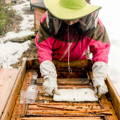
2. PROVIDE ADEQUATE WINTER STORES
Honeybees rely on stored honey for sustenance during the winter when forage is scarce. Ensure that your hive has enough honey reserves to last throughout the cold months. A typical hive requires 40-60 pounds of honey for winter survival, but the exact amount can vary depending on factors like local climate and hive size. Move the queen excluder above the honey stores that you are leaving with the bees for the Winter.
If the hive's honey reserves are low, beekeepers should provide the bees a sugar syrup or fondant to ensure they have an adequate food supply to survive the winter. If doing so, don’t forget to move the queen excluder above the supplemental fondant candy board so the queen and her attendants have easy access to the food source.
3. MONITOR VARROA MITE INFESTATIONS
Varroa mites are a significant threat to honeybee colonies, particularly in the winter when bees are stressed and vulnerable. After you have removed your honey supers for the season and before winter, assess the mite levels in your hive and apply appropriate treatments if needed. A lower mite load will help your bees stay healthy and resilient during the cold season.
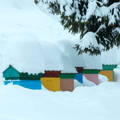
Trending Articles
4. INSULATE THE HIVE
Maintaining an optimal temperature within the hive is essential for the survival of the honeybee colony during winter. Beekeepers that live in cold climate regions should insulate their hives to prevent heat loss and protect the bees from extreme cold. Materials such as insulation boards or specialized hive wraps can be purchased to provide the necessary insulation. Make sure not to block the hive entrance in the process.
A well-insulated hive helps maintain a stable temperature, reducing the bees' energy consumption and making it easier for them to cluster together for warmth. Be cautious not to over-insulate, as this can trap moisture inside the hive, which may lead to condensation and frostbite.
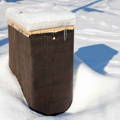
5. VENTILATION IS KEY
Although insulating the hive is important, ventilation is equally crucial. Adequate airflow helps regulate humidity levels and prevents moisture buildup inside the hive. Condensation in the hive can lead to mold and other potential issues. Use an inner cover with a center hole to ensure proper airflow.
6. REDUCE HIVE ENTRANCES
During winter, it's wise to reduce the hive's entrance to a small, manageable size. This limits cold air intrusion and deters potential predators. If you do not already have one, purchase a hive entrance reducer to achieve this.
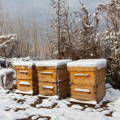
By reducing the entrance size, bees can more effectively defend against predators and maintain a warmer internal temperature. This simple yet effective measure can significantly contribute to the overall survival and well-being of the honeybee colony during the cold months.
7. PERIODIC WINTER MONITORING
Beekeepers should periodically check the hive's food reserves, monitor the internal temperature, and ensure that the bees have access to a water source. Additionally, any signs of disease or pest infestations should be addressed promptly to prevent further damage to the colony.
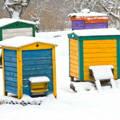
CONCLUSION
Preparation is key when it comes to ensuring the survival and well-being of honeybee colonies during the winter months. By following these guidelines, you can help your bees weather the cold season successfully.
Remember that beekeeping requires constant vigilance, even in the winter months, to ensure that your hive remains healthy and strong. With care and attention, your honeybees will emerge from winter ready to thrive in the coming spring.
Trending Products
Copyright©2023 All rights reserved. We love to have you share our article as long as you include a direct link to this page. This article or any portion thereof , including all images, may not be reproduced or used in any manner whatsoever without the express written permission of Gypsy Shoals Farm.



